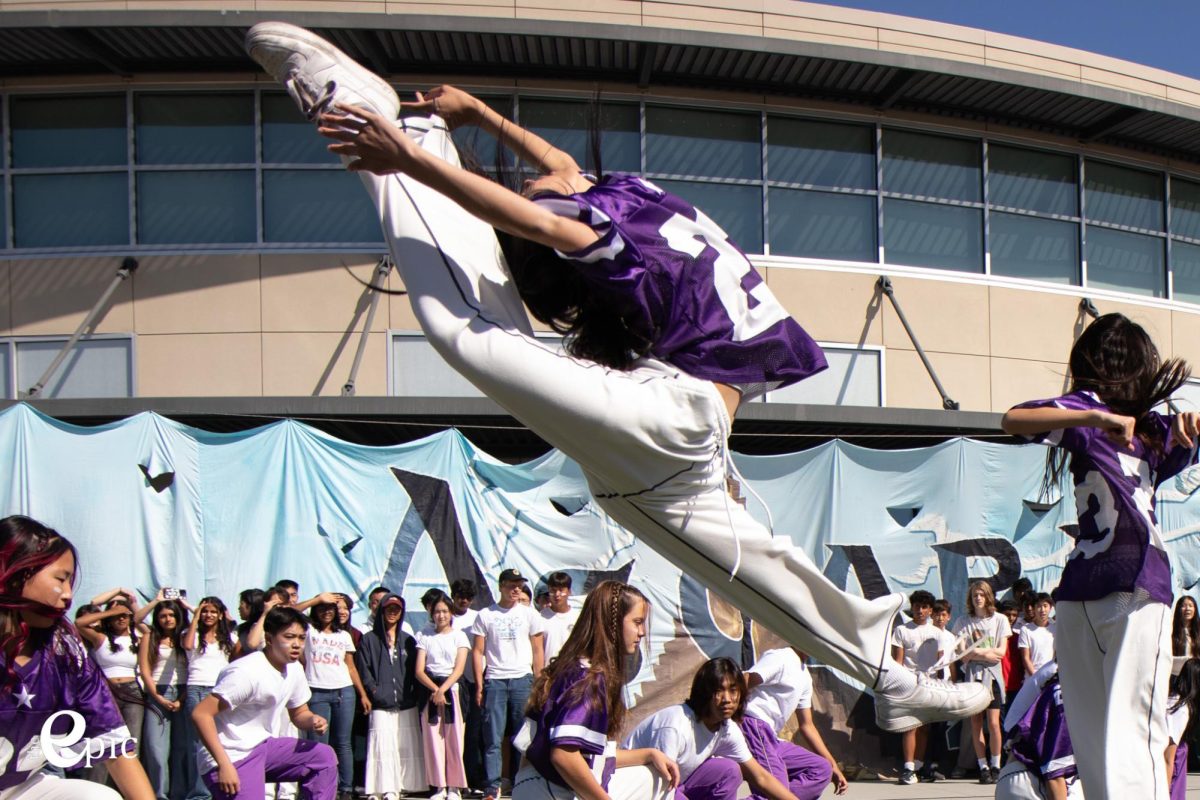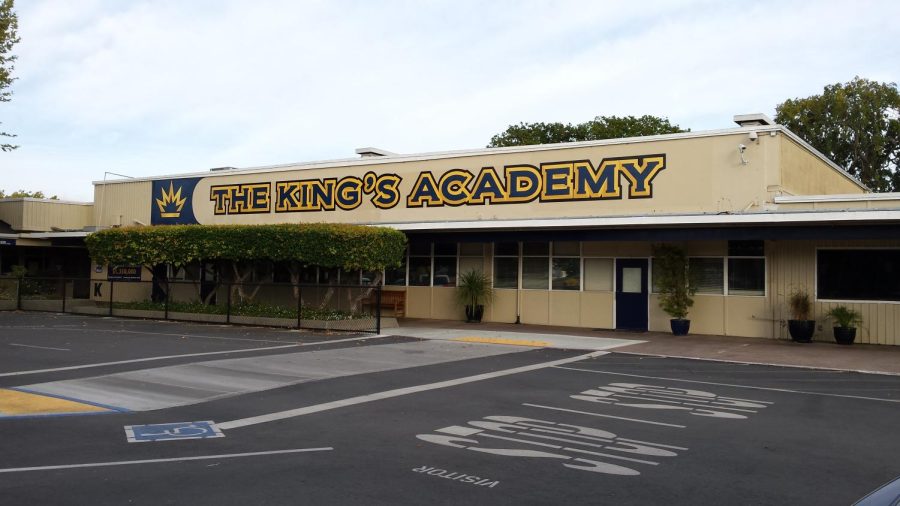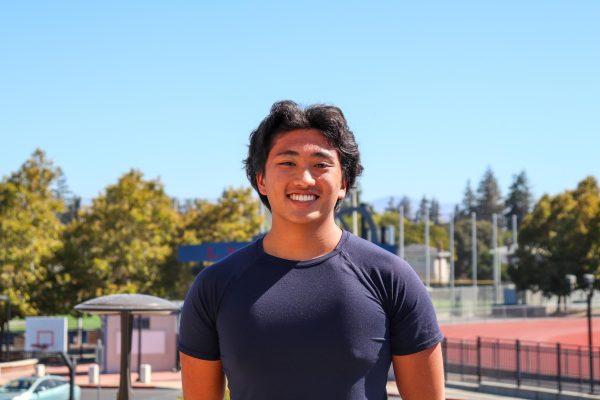Sunnyvale equity concerns spark district action
Photo by Daniel Penfield, Wikipedia Commons
Since 1991, FUHSD has leased out the Sunnyvale High School property to The King’s Academy. The board discussed the possibility of reclaiming the property and reopening Sunnyvale High School.
April 10, 2023
In north Sunnyvale lies Moffett Park, a 1,156 acre development site. Here, the City of Sunnyvale seeks to create a diverse and sustainable mixed-use district to ensure climate sustainability and decrease the number of car-dependent sprawls in the Bay Area. A mixed-use district is an urban planning approach that integrates different land uses, such as residential, commercial and recreational all within the same area. These new developments may induce a population boom, prompting local advocacy groups to push for a new FUHSD school to be built in the area.
Outlined in the ambitious Moffett Park Specific plan, the city aims to construct 20,000 new housing units in the area, the first units of which are projected to be available by 2027. However, existing equity concerns for Northern Sunnyvale students and the plan’s implications have made the Sunnyvale for Equity in Education advocacy group renew calls for the district to implement policies that address student inequities.
“If you look at the district boundaries, there is a disparity between the generally lower socioeconomic status in the northern parts of the district and higher socioeconomic status in the southern end,” founder of SEE Peggy Shen Brewster said.
One of SEE’s short-term objectives is to create reliable and affordable transportation options for students in Northern Sunnyvale to attend Fremont or Homestead High School. Currently, the district provides bus passes for eligible students, but according to SEE, there is a lack of clarity surrounding eligibility.
“According to Superintendent Graham Clark, there are three qualifiers for getting a district subsidized (free or discounted) bus pass: residing in the attendance area of the now closed Sunnyvale High school, qualifying for free or reduced lunch and/or if it takes more than 30 minutes for a student to walk to school,” Brewster said. “But these qualifiers are not clear, and many families have reported they do not accurately reflect their experiences in trying to get a pass.”
In February, SEE successfully lobbied for the prioritization of DPW 23-06 in the Sunnyvale City Council, which ensures that a study issue aimed at improving the transportation options for Northern Sunnyvale students who attend Fremont or Homestead will have funding priority.
“With transportation, it’s not only about getting students to and from school, but also how we can facilitate transportation to support Northern Sunnyvale students’ participation in afterschool programs,” FUHSD board trustee Jeff Moe said.
SEE aims to further enhance the representation of Sunnyvale residents in the district’s bureaucratic functions by establishing channels for open dialogue and electing trustees who reside in and reflect the Sunnyvale community. Currently, all four serving trustees live in the southern regions of the district’s attendance areas. SEE was integral to the FUHSD Board of Trustee’s decision to move forward with the transition from at-large to by-district area trustee elections during their March 7 board meeting. An “at-large” board election system elects trustees from anywhere within the district’s boundaries, while a “by-district” system elects one from each of the district’s five sections. SEE believes this change will help facilitate better Sunnyvale representation on the board.
Long-term advocacy efforts are focused on creating more educational options in the northern region so students will not have to make lengthy commutes to attend Fremont or Homestead. Encouraged by SEE’s advocacy efforts, the FUHSD board held a study session on Jan. 31, analyzing the feasibility of two proposals for new local educational options for Northern Sunnyvale students — reopening Sunnyvale High School or building a new FUHSD School in the area.
“We appreciate everyone who advocates for our students, so we appreciate the work that SEE is doing and the concerns that they have,” Moe said. “That was a lot of the motivation for us to go into this study to look at the feasibility.”
Sunnyvale High School was the second FUHSD school to open in the district in 1956 — before Lynbrook, Monta Vista or Homestead. However, due to projected low enrollment and budgetary cuts resulting from the implementation of Proposition 13, it was shut down in 1989. Since its closure in 1989, the district has leased out the property to The King’s Academy, a private school for grades six through twelve.
Both reclaiming the property and expansion of the current King’s Academy campus would be necessary to accommodate a larger student population but the campus size would also still be constrained by the original site area of 22 to 24 acres — about half the size of a typical modern FUHSD school. For construction of a new school, the district would have to select and purchase 40 acres of land from the City of Sunnyvale— a multi-year process that could cost millions on its own. The board concluded that both proposals would be too expensive to consider in the short term with total estimated costs ranging between $405 million and $545 million.
“The lengthy travel for Sunnyvale residents to Homestead and Fremont is a real issue and raises equity concerns,” Physics teacher Thanh Nguyen said. “Outside of particularly extreme alternatives, however, there’s no magic solution to the current situation. The district stands to lose thousands of students in enrollment over the next half-decade, and opening a new school in that environment is silly.”
That does not mean that constructing a high school is entirely out of the question, however, and SEE hopes to continue to work with the board to address students’ needs both in the short and long term.
“Building a new comprehensive FUHSD school is super expensive, but I don’t think that’s the only option either,” Brewster said. “There’ve been a lot of discussions about how we can be more creative with bringing school to the kids instead of making the kids travel super far to get to school.”
For example, the board is actively engaging with Foothill College to coordinate logistics for potentially offering high school course opportunities at Foothill’s Sunnyvale site, similar to the successful FUHSD Middle College program at De Anza and Foothill Colleges.
While SEE has made impressive strides in advocating for equity for Northern Sunnyvale students in the short term, they will continue to push for greater educational options, despite the challenges of high cost and voter approval. The board will also continue to be receptive with Northern Sunnyvale residents’ concerns and research ways to improve the quality of education for those residents.
“This doesn’t mean that the school board should just stop thinking about this issue,” Nguyen said. “Opening and staffing a school takes a lot of bureaucratic time, so while the board should be concerned with current issues, like declining enrollment and the proposed changes to world language options, they must also keep a watchful eye on solutions for the future.”



































































SB • Feb 4, 2024 at 6:39 am
Split the district, there is no reason to make an enormous school district, especially if Sunnyvale wants to build so much housing in north Sunnyvale.
Take back king’s academy, take Fremont and homestead and find other property if you need more space and make your own district.
MVHS, CHS & Lynbrook can become Cupertino High schoool district! Cupertino will find its district, Sunnyvale can find its district. Smaller is better since it will be better managed.
Ann Penalosa • Apr 11, 2023 at 9:51 pm
Correction (though tbh this was probably just an oversight during EIC edits): Sunnyvale High School was not only open for 9 years, but rather was opened in 1956 (before Homestead, Lynbrook, Monta Vista, and Cupertino HS) and shut down in 1981 as a result of Measure K. This information can be found on FUHSD’s website. SHS was the second school to open in the district, and I hope that the Epic corrects the information.